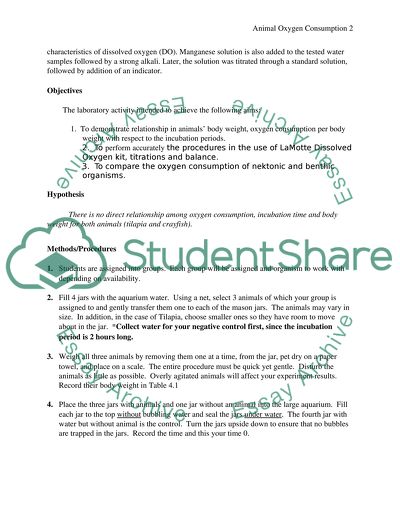Cite this document
(“Animal Oxygen Consumption Lab Report Example | Topics and Well Written Essays - 2000 words”, n.d.)
Animal Oxygen Consumption Lab Report Example | Topics and Well Written Essays - 2000 words. Retrieved from https://studentshare.org/miscellaneous/1525193-animal-oxygen-consumption
Animal Oxygen Consumption Lab Report Example | Topics and Well Written Essays - 2000 words. Retrieved from https://studentshare.org/miscellaneous/1525193-animal-oxygen-consumption
(Animal Oxygen Consumption Lab Report Example | Topics and Well Written Essays - 2000 Words)
Animal Oxygen Consumption Lab Report Example | Topics and Well Written Essays - 2000 Words. https://studentshare.org/miscellaneous/1525193-animal-oxygen-consumption.
Animal Oxygen Consumption Lab Report Example | Topics and Well Written Essays - 2000 Words. https://studentshare.org/miscellaneous/1525193-animal-oxygen-consumption.
“Animal Oxygen Consumption Lab Report Example | Topics and Well Written Essays - 2000 Words”, n.d. https://studentshare.org/miscellaneous/1525193-animal-oxygen-consumption.


